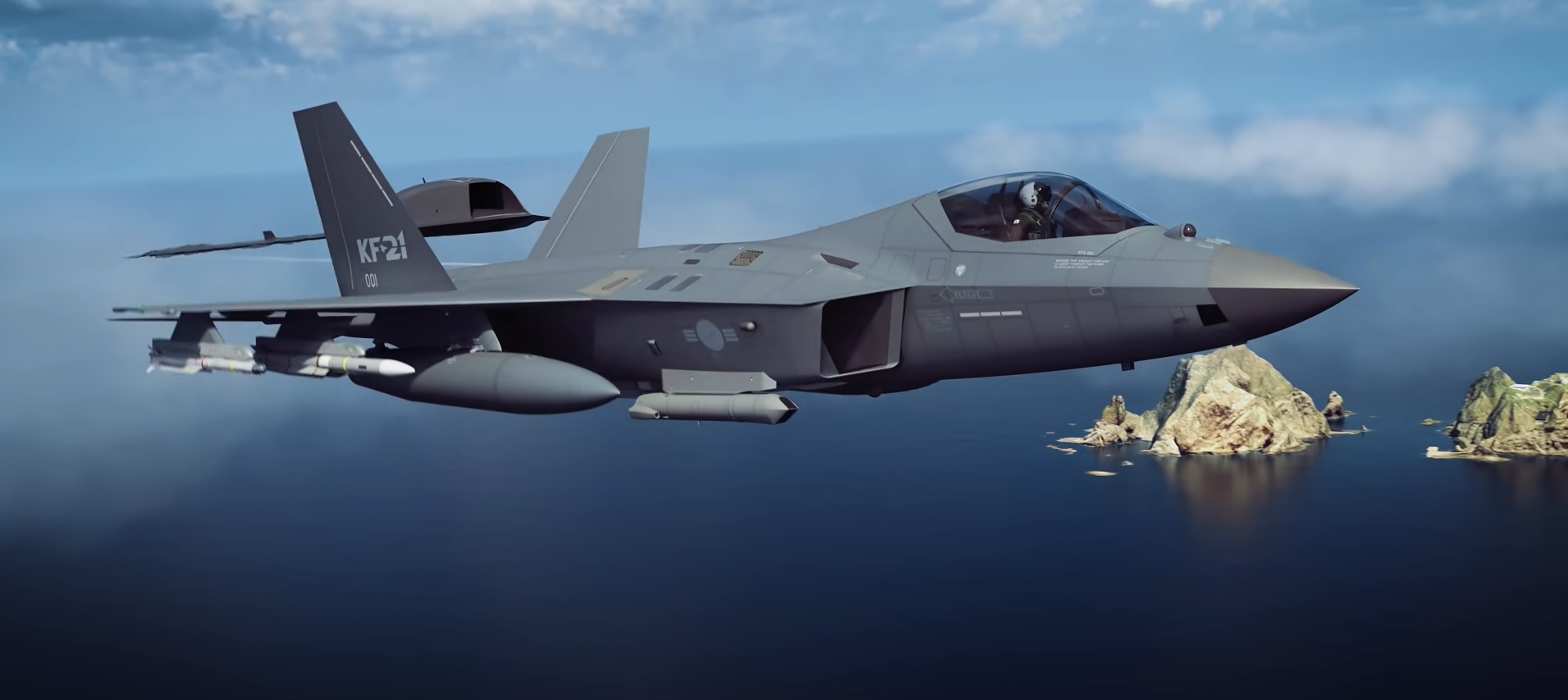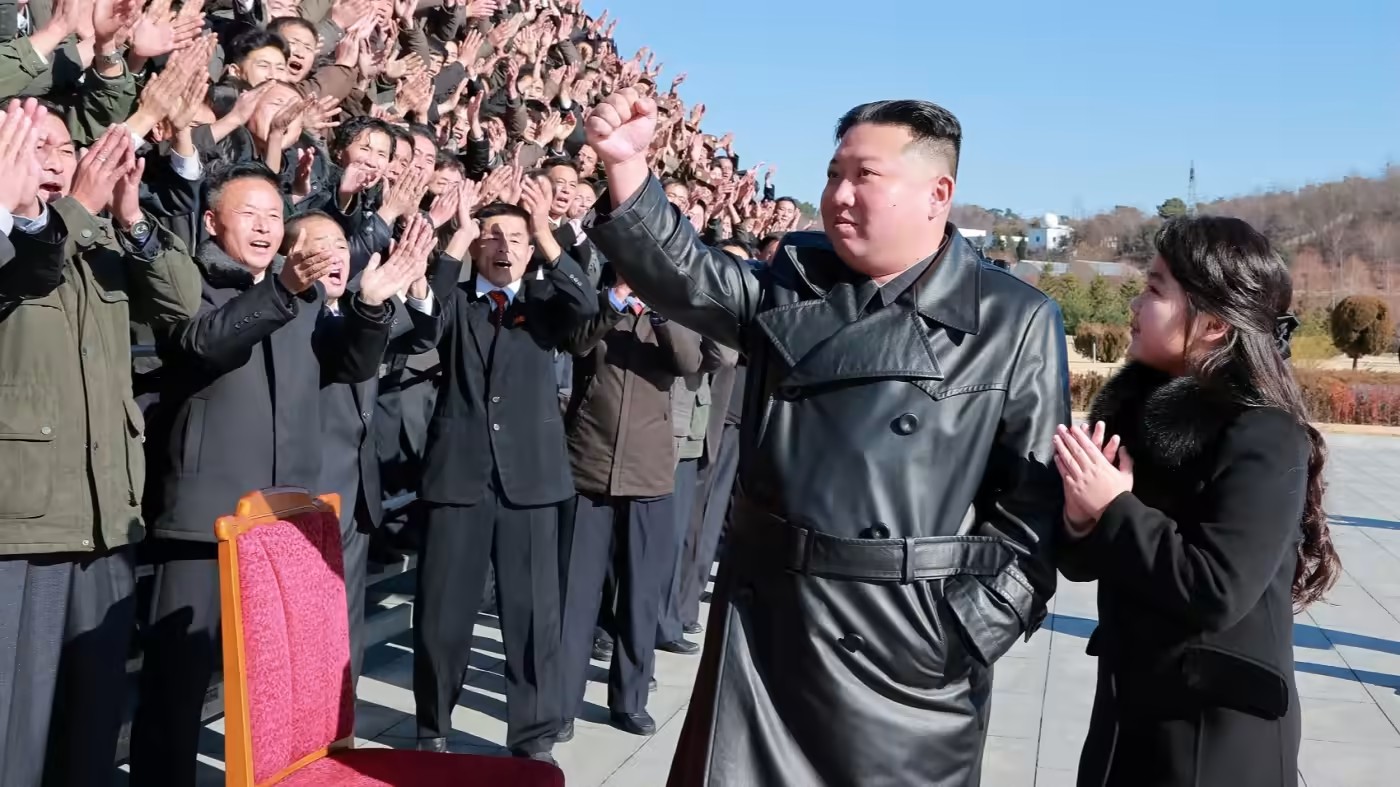South Korea is reportedly developing its new ‘Air-to-Ship Guided Missile-II’ to possess multi-role capabilities, including the ability to attack ground-based targets, as North Korea remains invested in bolstering its naval force and conducting relentless ballistic missile testing.
More than two years ago, in February 2021, the missile broke cover. Locally referred to as the “400mm-class Air-to-Ship Guided Missile-II” or the 400mm-II, this missile reportedly has a range of 500 kilometers and is powered by a ducted ramjet engine.
Local missile systems maker LIG Nex1 is reportedly developing this missile with the South Korean Agency for Defense Development (ADD); however, barely any reports about this missile are available in the public domain.
Naval News reported that as the KF-21 continues to go through its much-needed testing, the role of the missile has been expanded in scope by adding land-attack capabilities. The publication noted that this information was revealed during a recent seminar on the technology development of aviation weapons systems held in South Korea. EurAsian Times could not independently verify the claims.
The report noted that this air-launched supersonic missile will offer two warhead options. The anti-ship missile’s tip can be changed depending on the target, similar to the French MICA air-to-air missile. Korea previously purchased European Meteor long-range missiles for the KF-21.
The “Air-to-Ship Guided Missile-II” seeker will be equipped with a Radio Frequency (RF), Imaging Infra-Red (IIR) seeker system, and Electro-Optical (EO) seekers to adapt to all circumstances and targets, the report noted. It also emphasized that South Korea has produced multi-mode seekers that could be fitted on various missiles, including the Hyunmoo, L-SAM, and Land-based Supersonic AShM.
The supersonic ducted-ramjet air-to-ship guided missile-II will reportedly be slightly smaller than anticipated, with a length of 6 meters, a diameter of 400 to 350 millimeters, and a weight of 940 kilograms.
It was previously noted features like “ramjet engine and data link technologies secured while preparing for the development of the air-to-ship-II missile will be able to be applied to the domestic development of 200mm air-to-air missile without much difficulty”.
Besides the air-to-ship guided missile II, the Ducked-Ramjet engine is also used in a long-range air-to-air missile developed by South Korea’s ADD. The long-range air-to-air missile has a diameter of about 200 mm, making it more significant than the US-origin AIM-120 AMRAAM and comparable to the AIM-7 Sparrow.
The Air-Launched Long-Range Cruise Missile (ALCM), also known as “Skydragon,” is currently being developed in Korea. However, Seoul’s recent defense plans emphasize real-time strikes across the board, including at sea and on land targets. This is why the multipurpose/role capabilities of this Air-to-Ship Guided Missile-II appear to have been approved.
According to the recent report, the government representatives claim that the ramjet engine test for this Air-to-Ship Guided Missile-II may have been finished on January 18, 2023. EurAsian Times is currently awaiting more information from the South Korean authorities.
It will be carried by the KF-21 4.5th generation fighter jet Boramae, which means “Hawk” in Korean. After the ongoing testing, the aircraft was named the KF-X and is expected to enter mass production next year.
The twin-engine South Korean combat jet intends to fill the gap between the F-35 and the F-16 in terms of capabilities and is expected to be cheaper than the F-35. The KF-21’s weapons will be carried externally on six under-wing and four under-fuselage hardpoints.
Having said that, if the report about the testing and development of this missile for multi-role capability is authenticated, it comes when tensions are running high with North Korea with the potential for an unprecedented flare-up.

Threat From North Korea At An All-Time High
South Koreans are urging for a prompt and strategic reaction as North Korea continues to develop its nuclear and missile capabilities, posing a severe threat to their country’s national security. The strategic response includes acquiring new capabilities, including long-range and multi-role missiles that would help thwart an attack by Pyongyang’s military.
The development of anti-ship missiles is also significant, given that recent reports have indicated that the North Korean regime was furthering the development of its Navy by adding more warships and underwater drones to its fleet. It recently inducted its first operational submarine, paving the way for the DPRK to assume a more enhanced role.
Tensions have been running high between the two enemies. While South Korea has been disenchanted by Pyongyang’s relentless launch of ballistic missiles, the North Korean regime has accused Seoul of provocation as it conducts frequent military drills with the United States.
Moreover, Kim Jong Un’s recent visit to Russia and the speculations of procuring arms from Russia triggered a fierce response from Seoul, which warned the isolated regime of dire consequences. North Korea disproves and fumes at the military collaboration between Seoul and Washington.

Tensions peaked when North Korea said it would respond to any US aggression or provocation with “the most overwhelming and sustained response strategy” in reaction to a recent Pentagon report that described North Korea as a “persistent” danger due to its possession of WMD.
The Pentagon’s unclassified version of its “2023 Strategy for Countering Weapons of Mass Destruction” was made public last week, outlining the problems with WMDs and solutions. Although China and Russia provide “the principal WMD challenges,” the report noted that North Korea, Iran, and violent extremist groups continue to pose “persistent regional threats” that must be considered.
On its part, South Korea’s Defense Ministry warned in a statement that any attempt by North Korea to use nuclear weapons would result in the end of the Kim government.
- Contact the author at sakshi.tiwari9555 (at) gmail.com
- Follow EurAsian Times on Google News




